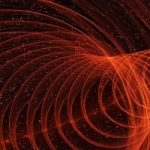BT Finds Optical Hollow Core Fiber To Be Particularly Effective for Quantum Key Distribution

(ZDNet) BT found a new type of optical fiber filled with nothing but thin air to be particularly effective for carrying out quantum key distribution (QKD), a security protocol that is in principle un-hackable and could play a key role in protecting sensitive data against ever-more sophisticated cyberattacks. BT experimented with QKD over a six-kilometer-long cable of hollow core fiber, a technology that it has been working on for the past few months as an alternative to traditional fiber optic cables.
It turns out that this hollow core configuration is better suited to QKD, because it reduces the possibility that different signals interfere with each other and spoil the whole process.
This approach is particularly interesting to security researchers because it is based on the laws of quantum physics, which dictate that qubits collapse as soon as they are measured. This means that if a third-party eavesdrops on the exchange and measures the qubits to figure out the cryptography key, they would inevitably leave behind a sign that they have intruded.
Cryptographers, therefore, call QKD “provably” secure. The method is expected to bring an additional level of safety to data exchanges, especially as hackers develop better tools to crack existing security protocols.
The technology is nascent, and researchers are looking at various ways to carry out QKD; but one of the most established approaches consists of using optic-fiber cables to send both the qubits that are loaded with the cryptography key, and the actual encrypted message.
Ultimately, hollow core fiber could be a more efficient candidate for QKD – an “all-in-one” solution that requires less infrastructure to be built.
“We know now that if we were to put hollow core fiber in, it could enable us to put quantum channels potentially anywhere we like, without having to worry,” Catherine White, a researcher at BT, tells ZDNet. “Whereas with standard fiber, we either have to assign separate fibers for the QKD system or we have to be really careful not to have too much on classical power when doing the planning.”
























